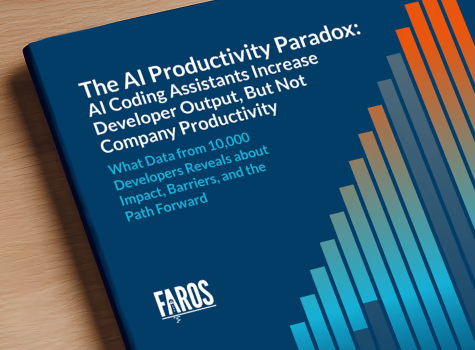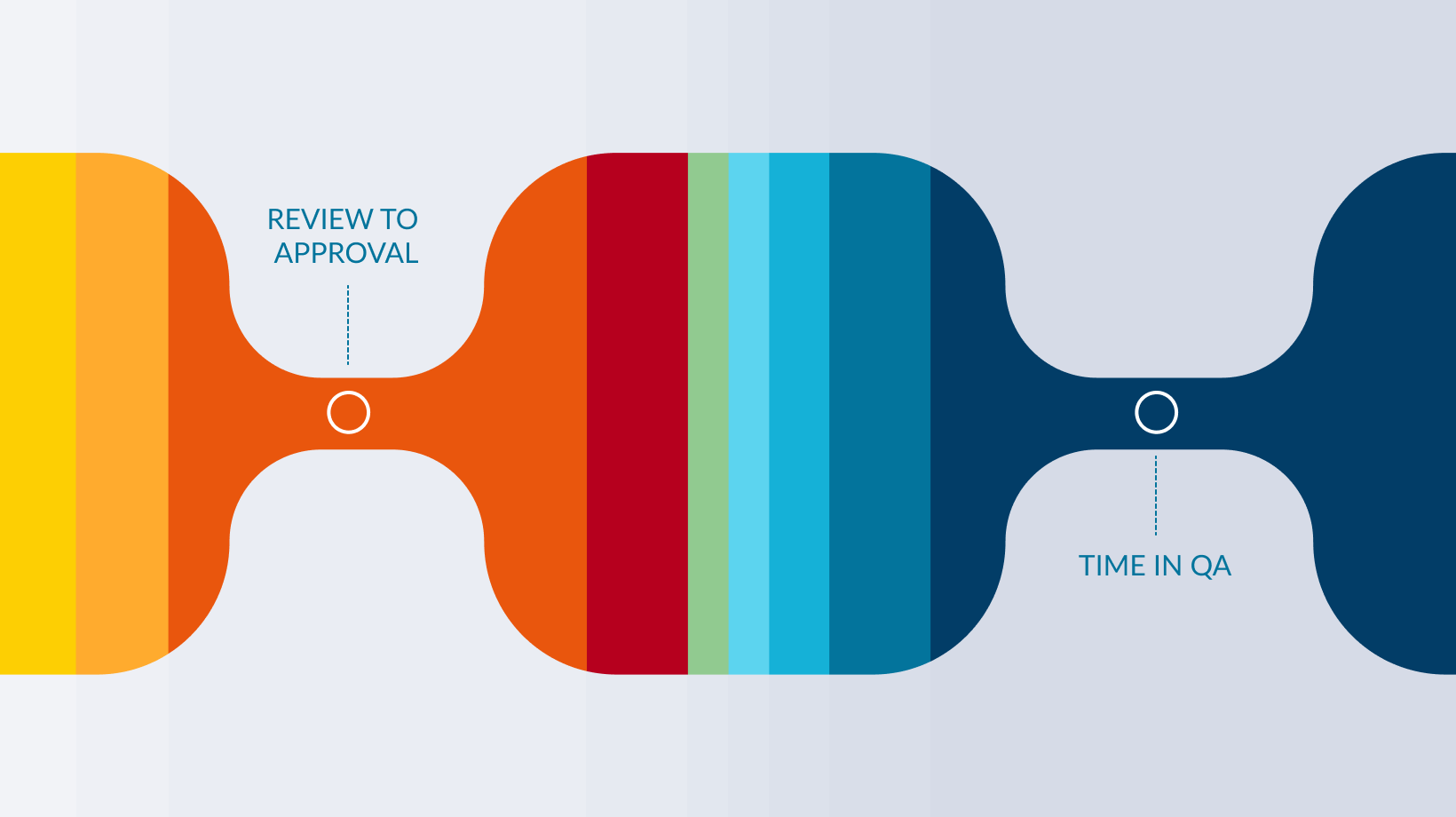The $1B acquisition that changes everything
TL;DR: Atlassian's $1B acquisition of DX validates the developer productivity category while creating new vendor lock-in risks. For enterprises, this signals a critical moment to choose between independent, specialized platforms that adapt to your needs versus integrated suites that force you into their ecosystem. The choice you make now will determine your ability to measure and optimize AI transformation over the next decade.
Atlassian just made the largest acquisition in developer productivity measurement history, paying $1 billion for DX. While the tech world celebrates this as category validation, enterprise CTOs face a more complex reality: This acquisition fundamentally changes the competitive landscape and creates both opportunities and risks that will impact engineering organizations for years to come.
The market validation years in the making
The acquisition represents the culmination of a category that has been steadily building momentum for years. Even Atlassian, with thousands of engineers and unlimited resources, spent three years trying to build developer productivity measurement tools in-house before recognizing the need for specialized expertise. Their $1B acquisition is essentially a public confession that this category requires specialized expertise that even they couldn't develop internally.
This validates what many engineering leaders have suspected: developer productivity measurement isn't a side project or "nice-to-have" dashboard. It's a sophisticated discipline requiring deep technical expertise, complex data normalization across multiple tools, and nuanced understanding of how engineering organizations actually work.
The numbers support this shift. Investment in productivity analytics has jumped from 9% to 12% year-over-year, and Gartner predicts 60% of Fortune 500 companies will use developer productivity insights platforms by 2028, up from just 15% today—representing a 4x market expansion in four years.
But here's what the celebratory headlines miss: this acquisition creates as many challenges as opportunities.
The AI transformation imperative
The timing of this acquisition isn't coincidental. Organizations are in the early stages of the largest productivity transformation since the introduction of IDEs: AI-assisted development. As Atlassian CEO Mike Cannon-Brookes noted when announcing the DX acquisition, "You suddenly have these budgets that are going up. Is that a good thing? Is that not a good thing? Am I spending the money in the right ways? It's really, really important and critical."
His observation cuts to the heart of the challenge: organizations are investing heavily in AI tools without understanding their actual impact. McKinsey research shows that developer productivity initiatives can deliver 20-30% reduction in product defects, 20% improvement in employee experience, and 60-percentage-point improvement in customer satisfaction.
But measuring AI impact requires fundamentally different approaches than traditional productivity metrics. Organizations need visibility into:
- AI adoption patterns across teams and individuals
- Code generation vs. acceptance rates to understand actual productivity gains
- Quality impact of AI-assisted code on downstream metrics
- Causal analysis to ascertain AI’s direct impact on productivity and prevent misleading correlations
- Workflow changes as developers adapt to AI-powered tools
Platforms specifically built for AI transformation measurement address these requirements with purpose-built analytics that traditional productivity tools weren't designed to handle.
The challenge? Most traditional productivity measurement approaches weren't designed for this AI-native world. DX's pre-acquisition limitations are telling: Heavy survey dependency is vulnerable to multiple biases and distortion, implementation complexity extends rollout times, and their measurement framework lacks the granular AI-specific insights that organizations need.
Organizations that can't measure AI transformation can't optimize it. And those that can't optimize it will fall behind competitors who can.
The integration reality check
Atlassian's acquisition track record reveals a concerning pattern that should inform your platform decisions. They acquired HipChat in 2012, spent seven years trying to make it work, failed completely, and had to shut it down while selling the IP to competitor Slack. Jira Align still suffers integration issues and customer complaints six years after the AgileCraft acquisition, with community forums filled with troubleshooting guides for sync errors and workflow problems. While Trello has received periodic updates, long-term users express frustration with the pace of innovation, with recent community posts describing the platform as "outdated" and calling for more substantial modernization.
This isn't speculation about future integration challenges—it's documented proof of Atlassian's consistent struggle to successfully integrate and innovate with acquired technologies. Why would DX be different?
History shows major acquisitions typically require 18-24 months for meaningful integration, during which innovation stagnates and customer needs go unmet. During this integration period, the market will continue evolving rapidly, particularly around AI measurement and impact capabilities.
Meanwhile, DX will now be optimized to drive adoption of Jira, Confluence, and Atlassian's broader ecosystem rather than serving your specific strategic interests. The vendor-neutral approach that may have attracted you to DX initially will be replaced by platform lock-in pressure.
The five pillars your strategy must address
The Engineering Productivity Handbook reveals that world-class engineering organizations operate on five essential pillars: Productivity, Delivery, Outcomes, Budgets, and Talent. Each pillar requires specific metrics and analysis dimensions that must be tailored to your organization's stage, operating model, and culture.
The critical insight: there is no one-size-fits-all approach. As the handbook notes, "Your engineering productivity program should be adapted to your context, including what you need to achieve, how you work, and what you value. It will draw on many best practices but be tailored to your unique organization."
{{engprod-handbook}}
This context-dependency is precisely why integrated suites struggle. A startup optimizing for rapid product innovation needs different metrics than a public enterprise balancing compliance, quality, and scale. Geographic distribution, remote/hybrid policies, outsourcing strategies, and multiple SDLCs all require different analysis dimensions.
Atlassian's platform approach forces standardization where customization is critical. Independent platforms can adapt to your workflow; integrated suites require you to adapt to theirs.
The SPACE framework reality
The handbook emphasizes that adopting the comprehensive SPACE framework (Satisfaction, Performance, Activity, Communication, Efficiency) is challenging precisely because it requires selecting the right metrics from each dimension based on your specific context.
The key questions driving metric selection include:
- Company stage: Startup metrics (lead time, throughput) differ from mature enterprise needs (cost optimization, compliance)
- Operating model: Geographic distribution, outsourcing strategies, and employment types each require specific analysis dimensions
- Engineering culture: Individual vs. team metrics, performance management approaches, and cultural values
DX's "out-of-the-box" approach may seem appealing, but the handbook makes clear that standardized approaches fail because they can't account for organizational nuance. The most successful implementations start with understanding "what matters to you" before selecting metrics and tools.
This is where specialized, independent platforms demonstrate clear advantages over integrated suites. They can rapidly build custom dashboards (like delivering customized AI insights views in 24 hours) while integrated platforms struggle with bureaucratic constraints.
The build vs. buy lesson everyone should learn
Atlassian's three-year failed attempt to build developer productivity tools internally provides the clearest validation for specialized platforms. The technical complexity is real.
McKinsey research confirms that accurate productivity measurement requires 'systems and software that are set up to allow more nuanced and comprehensive measurement' and 'entire tech stacks and development pipelines need to be reconfigured.'
Multiple industry sources document failed DIY attempts, with organizations concluding it's more strategic to focus engineering resources on core business value rather than building commodity measurement infrastructure."
The lesson: Avoid wasting engineering cycles on commodity tooling and focus your developers on your core business. But choose your specialized vendor carefully.
Why vendor independence matters more than ever
With DX now part of Atlassian's ecosystem, the importance of vendor neutrality has never been clearer. If your organization is fully committed to the Atlassian stack, then the integrated DX solution may align with your strategy. However, most enterprises operate in mixed environments.
Independent platforms work with whatever tools you've chosen—GitHub, GitLab, Azure DevOps, Linear, or any combination—rather than forcing you into a vendor's preferred stack. This flexibility becomes critical when different teams have legitimate reasons for choosing different tools based on their specific workflows and requirements.
Consider the broader enterprise software landscape: organizations consistently choose best-of-breed solutions for specialized functions that require advanced capabilities, even when pursuing broader vendor consolidation strategies. Developer productivity measurement clearly falls into this specialized category where technical depth and customization matter more than integration convenience.
The research shows higher customer satisfaction for specialized solutions in specific functional areas. When specialized capabilities matter, enterprises choose independence over integration.
Strategic recommendations for engineering leaders
- Evaluate your AI readiness immediately. Organizations without robust productivity measurement capabilities are flying blind through the largest transformation in software development. You can't optimize what you can't measure.
- Prioritize vendor independence. Choose platforms that integrate with your existing toolchain rather than forcing wholesale changes. Your developer productivity strategy shouldn't be held hostage to one vendor's roadmap and pricing decisions.
- Demand customization capabilities. Look for platforms that can rapidly adapt to your specific metrics, workflows, and analysis dimensions. Avoid "out-of-the-box" solutions that can't evolve with your needs.
- Focus on executive-ready insights. Ensure your platform delivers dashboards and insights that work for leadership presentations, not just technical deep-dives. Your investment must serve both operational and strategic needs.
- Plan for the integration gap. If you're currently evaluating DX, consider that meaningful innovation will likely stagnate for 18+ months during Atlassian's integration process. Market evolution won't wait.
The path forward
Atlassian's acquisition validates that developer productivity measurement has moved from "nice-to-have" to "strategic imperative." The $1 billion price tag signals that boards and C-suites now understand this category's importance.
But validation doesn't equal vindication for any specific approach. The same market forces that drove Atlassian's acquisition—AI transformation, technical complexity, customization requirements—also highlight the limitations of integrated platform strategies.
The organizations that will thrive are those that choose specialized, independent platforms capable of rapid adaptation and deep customization. They'll measure AI impact accurately, optimize productivity continuously, and maintain the flexibility to evolve with changing technology landscapes.
The choice isn't between good and bad options—it's between strategic independence and vendor lock-in. Between customization and standardization. Between innovation speed and integration bureaucracy.
Choose wisely. Your engineering organization's next decade depends on it.
For more insights on measuring AI transformation in engineering organizations, see our research on enterprise AI coding assistant adoption and AI-powered software engineering trends.







